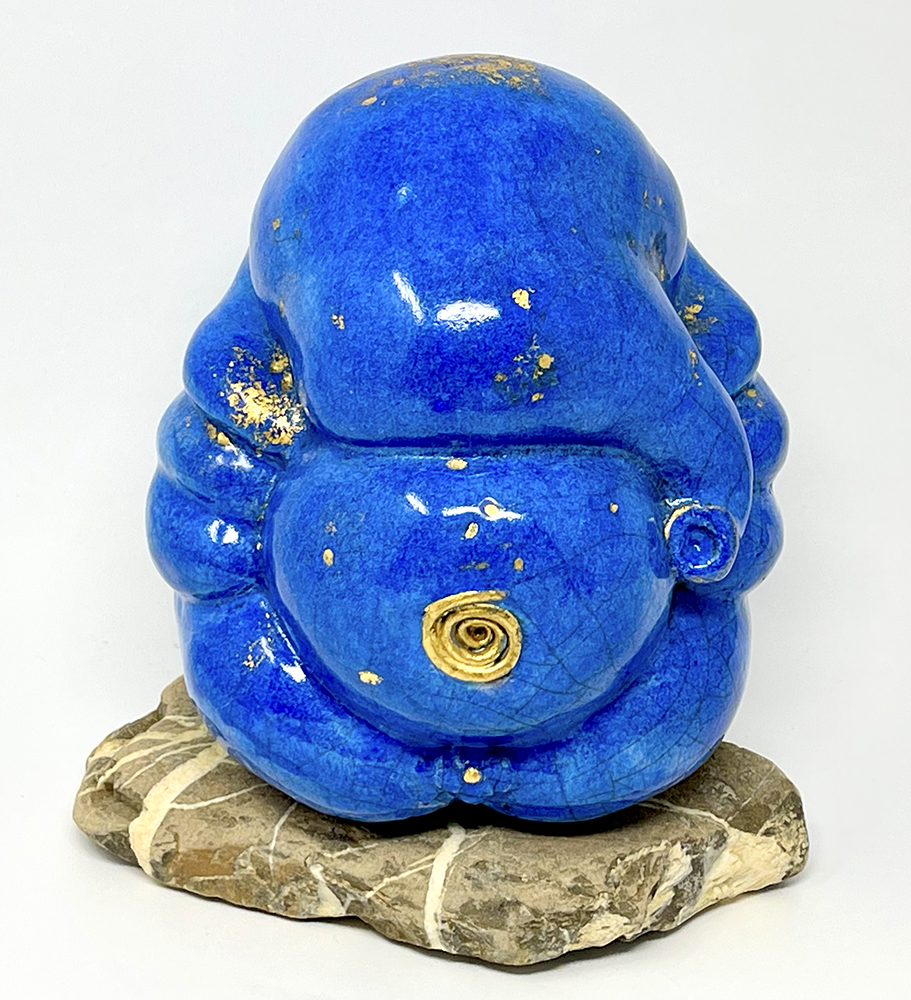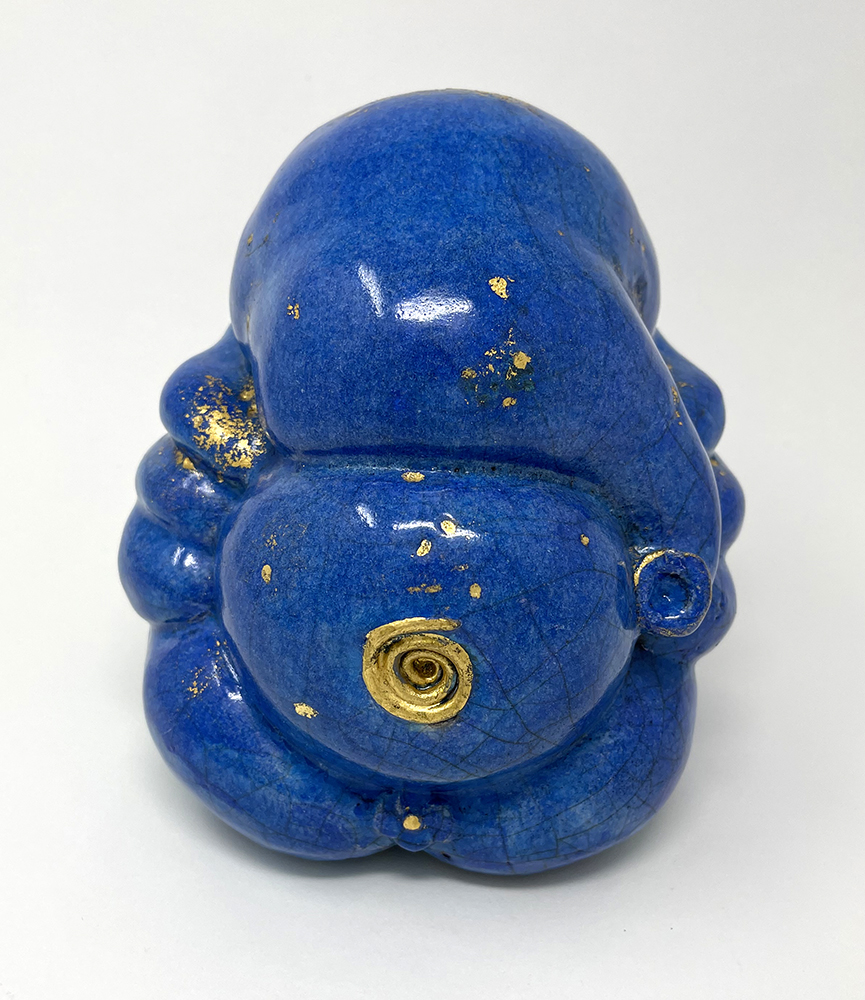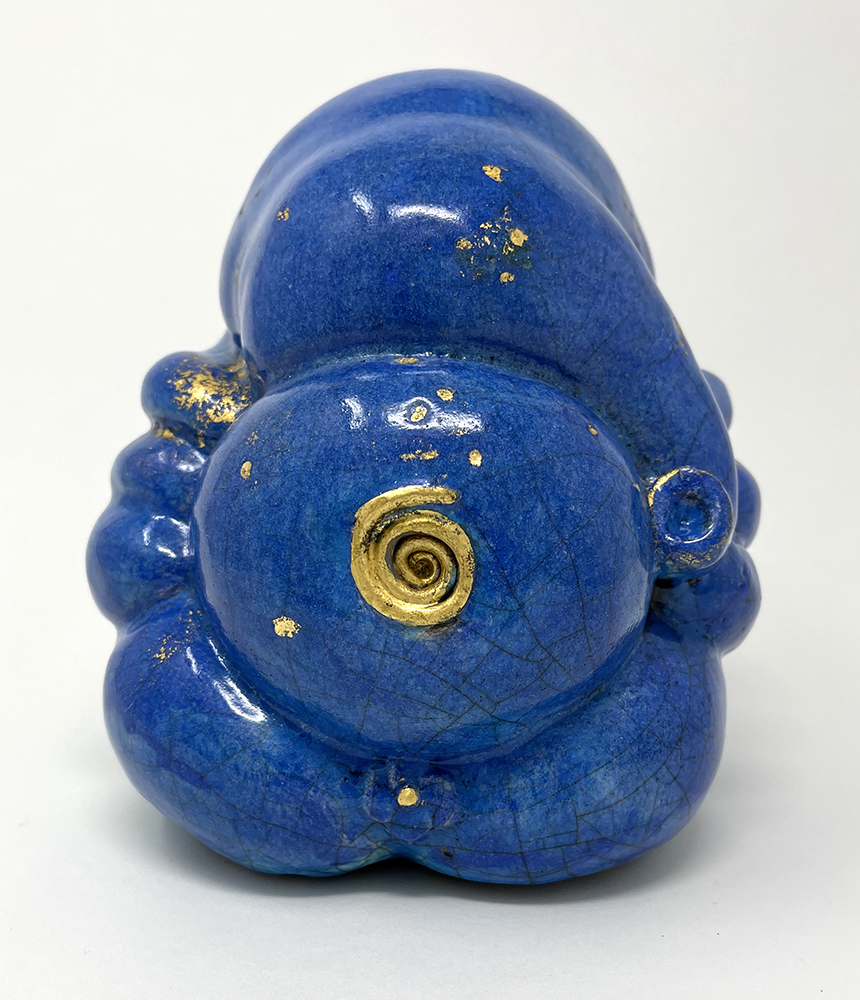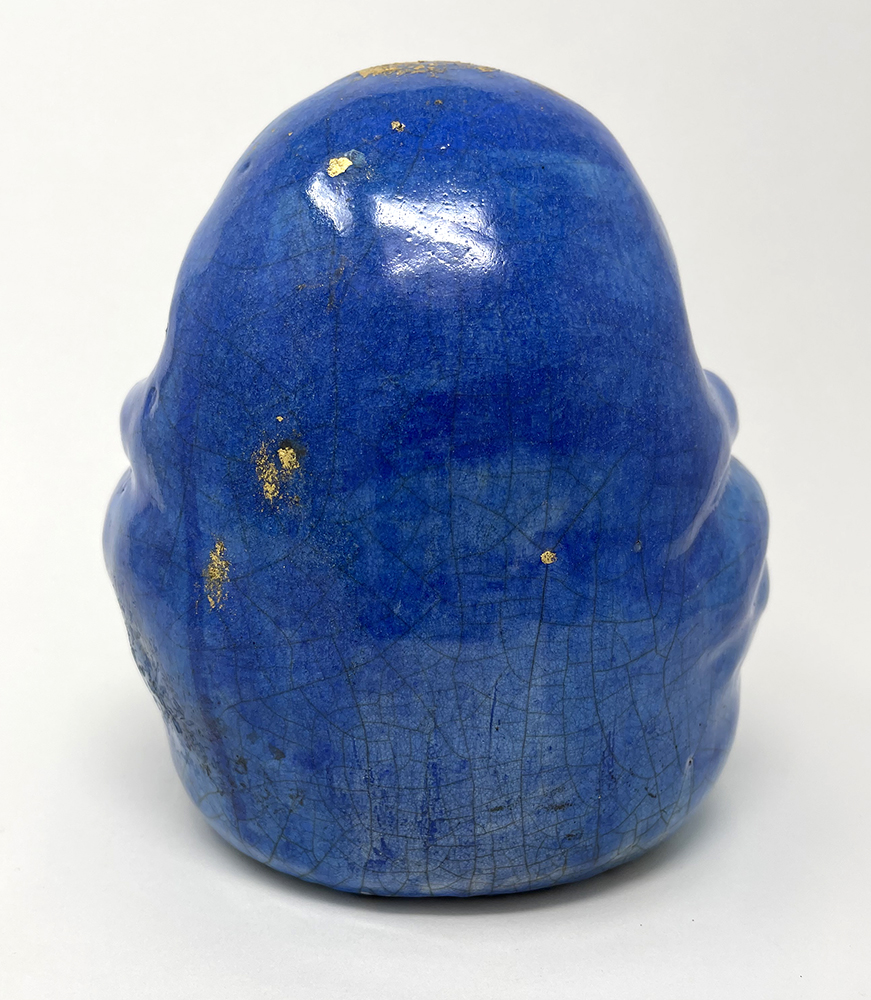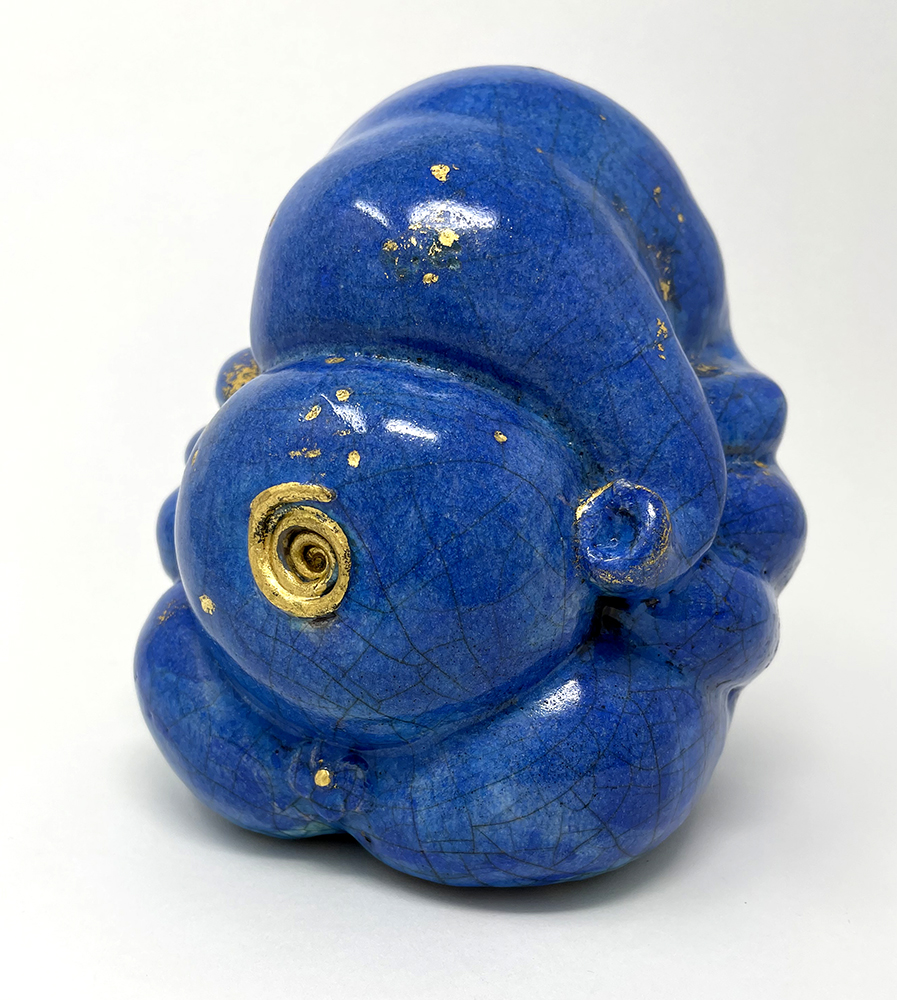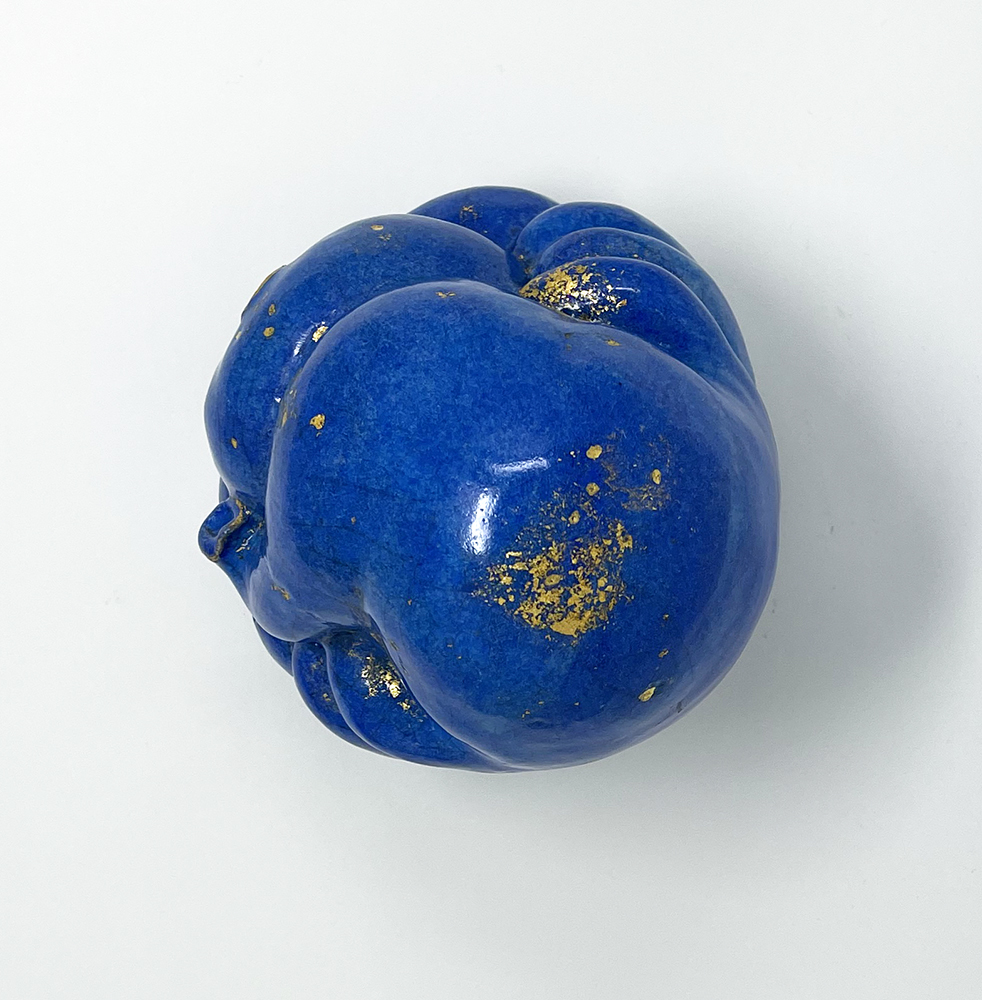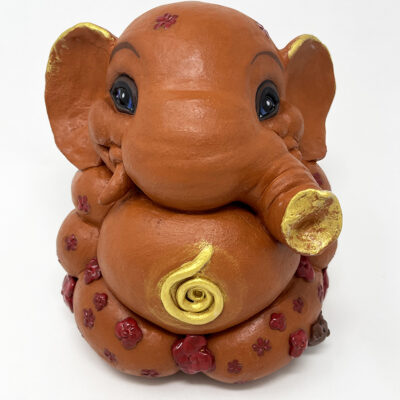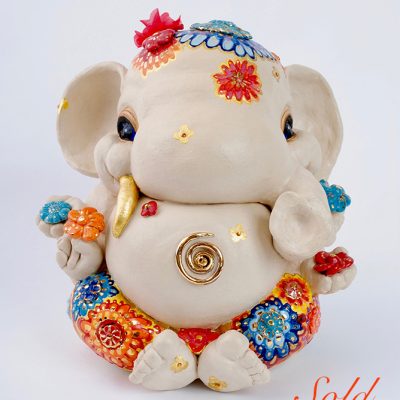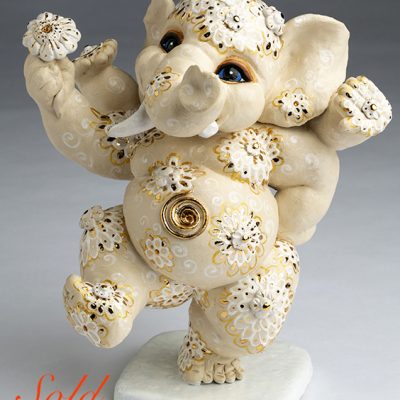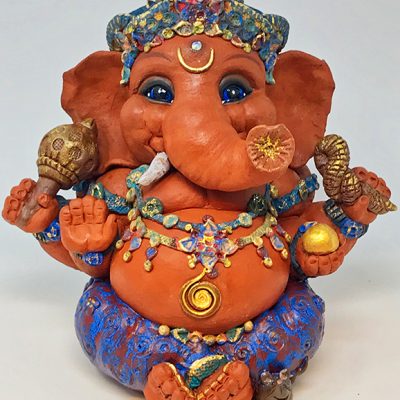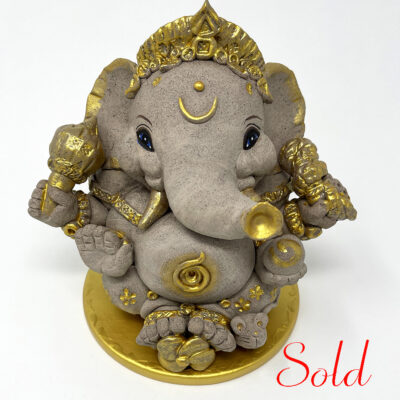Raku Deep Sea Ganesha
€998.00
Handcrafted, unique sculpture of Raku Moonlight Ganesha, the elephant child-god of innocence and wisdom, remover of obstacles. This hand-modelled stoneware (high-firing clay) Raku sculpture comes to life through a long process that includes a gas oven firing of the glazed sculpture, and placing it red hot into a closed box with sawdust, producing the highly unique glaze effect through the oxidation reduction process. Then 23K gold-leaf is added to highlights.
Catalogue Number: GRA 019/2023
(If you are sending this to a special someone as a present, please send me an email with a greeting text when you order, so I can include a creative card!)
Additional information
| Weight | 1.97 kg |
|---|---|
| Dimensions | 19 × 15 × 16 cm |
| Materials used | Stoneware (high-firing clay); Raku glaze; 23 carat gold leaf |
Ganesha is a very popular god in Hinduism, and is one of the most worshipped. Ganesha is a god of wisdom, success and good luck, in some ways like Lord Buddha is. He is a giver of countless blessings. Ganesha is considered as the one that can remove all obstacles and difficulties, therefore he is worshipped at the beginning of new endeavours.
See more here:
https://edwardsaugstad.com/ganesha-a-history/
First, I model the statue with a clay containing fine sand (stoneware) specially made to withstand the thermal shock after the second firing, when the gas-kiln temperature reaches up to one thousand degrees celsius and the object is then removed into the outside temperature. This process comes after the normal, previous firing, after which the glazes are applied. The gas-kiln is opened when the objects are still glowing red hot. They’re removed with special tongs and then quickly sealed in a metal box containing sawdust, which catches fire from the heat of the objects. Fine crack lines, referred to in the West as ‘Craquelée’, appear all over the surface as a result of the thermal shock.
This part of the process is also meant to give the glazes special effects, as oxygen is pulled from them by the sawdust catching fire in the box (oxidation reduction). The objects are then washed to remove the soot. The parts without glaze, and the fine cracks, become dark grey or black from the smoke.It is a magical process because only certain aspects can be controlled, and many beautiful surprises occur in the fire. Each piece is one of a kind.
Raku (meaning ‘enjoyment’ or ‘ease’) is an ancient Japanese technique from the sixteenth century, which has been adopted and modified by contemporary potters worldwide since 1922. The advent of Raku ware marked an important point in the historical development of Japanese ceramics, as it was the first ware to use a seal mark and the first to focus on close collaboration between potter and patron. It began in the sixteenth century and is closely connected to the Japanese Tea Ceremony (and its tea sets). The potter who created these special tea cups was awarded with a golden seal displaying the word RAKU, which was then passed down as the name from generation to generation.
Catalogue Number: GRA 019/2023
(Product weights and sizes are approximate. Sizes are in the order of height, width, depth.)
